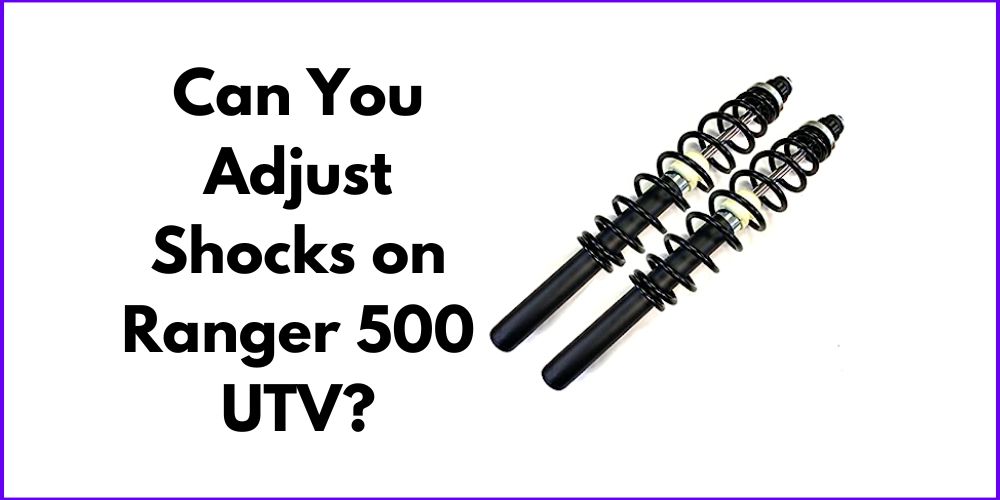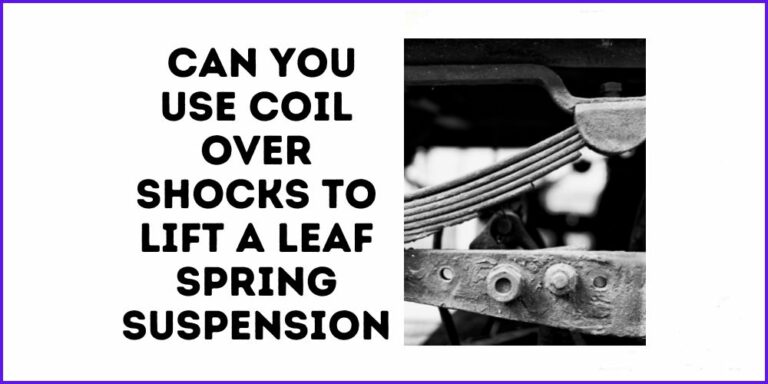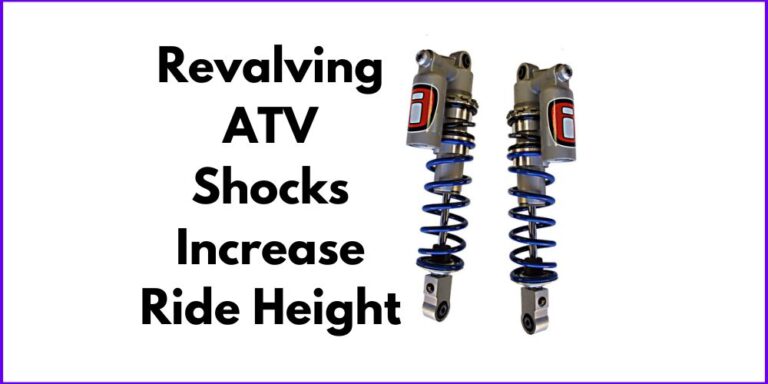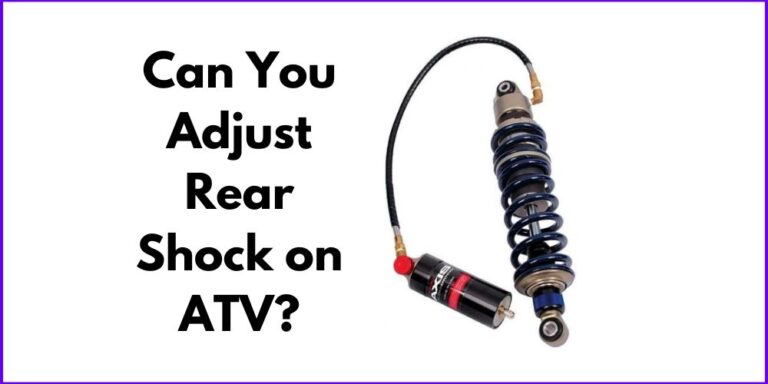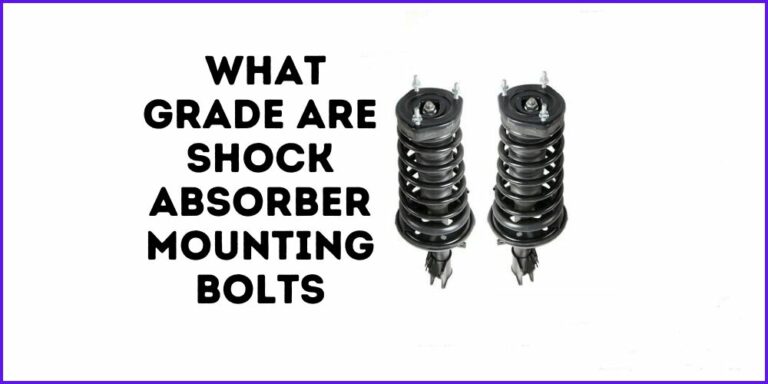Adjusting shocks on a Ranger 500 UTV is crucial for a comfortable and optimized off-road experience. The shocks play a vital role in absorbing impact and ensuring a smooth ride. In this blog post, we will explore the importance of properly adjusting shocks and how it can enhance your UTV adventures. By fine-tuning your UTV’s suspension system, you can optimize ride quality, handling, and performance based on factors like terrain and weight distribution. Let’s dive in and discover the world of shock adjustments for your Ranger 500 UTV!
Can You Adjust Shocks on Ranger 500 UTV?

Shocks play a crucial role in a UTV’s suspension system, impacting ride quality. Thankfully, on a Ranger 500 UTV, you can adjust the shocks to your preference. These shocks can be coil-over shocks or gas-charged shocks, each offering unique benefits. Key components include the shock body, piston, spring, and adjusters. Understanding these aspects sets the stage for effective shock adjustments, which we’ll explore further in the upcoming sections. Let’s optimize your UTV experience!
Reasons for Adjusting Shocks
When it comes to your Ranger 500 UTV, there are several compelling reasons why you might want to adjust the shocks. By fine-tuning the shock settings, you can achieve a more customized and optimized off-road experience. Here are some primary reasons for adjusting the shocks on your Ranger 500 UTV:
- Improved Handling: Adjusting the shocks allows you to optimize the suspension system to match different terrains and driving conditions. By finding the right balance of stiffness or softness, you can enhance your UTV’s handling and responsiveness. This can result in better control, reduced body roll, and increased stability, especially when navigating challenging off-road trails.
- Enhanced Comfort: Off-road adventures can be rough and bumpy, which can lead to discomfort and fatigue. Properly adjusted shocks can significantly improve your overall comfort by absorbing impacts and reducing vibrations. By fine-tuning the shock settings, you can minimize jolts and vibrations transmitted to the vehicle and, consequently, enjoy a smoother and more enjoyable ride.
- Optimal Performance: Every off-road excursion is unique, with varying terrains, obstacles, and vehicle loads. Adjusting the shocks allows you to optimize the UTV’s performance based on these factors. For example, softer settings may be suitable for rough terrains with lots of bumps, while stiffer settings might be preferred for more aggressive driving or carrying heavier loads. Fine-tuning the shocks ensures that your UTV performs at its best in different situations.
Adjusting Shocks on a Ranger 500 UTV
To optimize your Ranger 500 UTV’s shocks for the best performance and ride quality, it’s important to know how to adjust them properly. Here, we will provide step-by-step instructions, discuss different types of adjustments, and offer guidance on assessing current shock settings and determining desired adjustments.
1. Preparing the UTV for Adjustment: Before you begin adjusting the shocks, it’s essential to prepare your UTV properly:
-
- Park your UTV on a level surface to ensure accurate adjustments.
- Engage the parking brake to prevent the vehicle from rolling.
- If needed, consult your UTV’s owner manual for any specific instructions regarding shock adjustments.
2. Locating the Shock Adjustment Points: The exact location of the shock adjustment points may vary depending on the specific model of your Ranger 500 UTV. However, typically, you can find the adjustment points in the following areas:
-
- Front Shocks: Look for adjustment knobs or dials located near the upper part of the front shocks.
- Rear Shocks: Check for adjustment knobs or levers on the upper part of the rear shocks, usually accessible through the cargo bed.
3. Using the Appropriate Tools for Adjustment: To make the necessary adjustments, you may require the following tools:
-
- Adjustable wrench or socket set: For turning adjustment knobs or bolts.
- Screwdriver: If your shocks use a screw-type adjustment mechanism.
- Reference guide: If available, consult your UTV’s owner manual for specific instructions and recommended settings.
Now that you’re prepared to adjust the shocks let’s discuss the different types of adjustments you can make:
- Compression Adjustment: Compression adjustment controls the resistance of the shock absorber when it compresses. This adjustment affects how the UTV handles impacts and impacts the overall stability.
- Rebound Adjustment: Rebound adjustment controls the resistance when the shock absorber rebounds after compression. It affects how quickly the shock returns to its original position, impacting the UTV’s ability to absorb subsequent impacts and overall ride comfort.
Assessing the current shock settings and determining the desired adjustments: To ensure you make the appropriate adjustments, consider the following factors:
- Weight Distribution: Take into account the distribution of weight on your UTV. Adjusting the shocks can help compensate for variations in weight, ensuring optimal handling and stability.
- Terrain Conditions: Consider the type of terrain you’ll be driving on. Softer settings may be suitable for rough terrains, while stiffer settings may be preferable for smoother surfaces.
- Driving Style: Think about your driving style and preferences. If you prefer a more aggressive and responsive ride, you may want to adjust the shocks accordingly.
Fine-Tuning the Adjustments
To achieve the desired outcome, follow these tips for fine-tuning your shock adjustments:
- Make small adjustments: Start with small incremental adjustments and test your UTV’s performance after each change. This allows you to find the optimal setting without making drastic changes.
- Test and evaluate: Take your UTV for a test ride after each adjustment. Pay attention to how the vehicle handles, its stability, and the overall comfort of the ride.
- Iterative process: Adjusting shocks is often an iterative process. Don’t be afraid to experiment and make further adjustments until you find the perfect setting for your specific needs and preferences.
Final Thoughts
Properly adjusting shocks on your Ranger 500 UTV is essential for a comfortable and optimized off-road experience. By following the step-by-step instructions provided, you can fine-tune your UTV’s suspension system to improve ride quality, handling, and performance. Consider factors like weight distribution, terrain conditions, and driving style when making adjustments. It may take some experimentation, but finding the ideal setup is worth the effort. Don’t forget to consult your UTV’s owner manual and seek professional help if needed. Start exploring the benefits of adjusted shocks and enjoy an elevated UTV experience tailored to your preferences.

